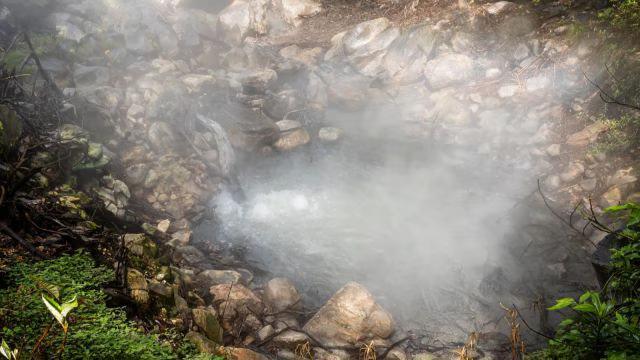
Volcanic Eruption Can Be Detected from Leaves’ Colour Change: NASA
The National Aeronautics and Space Administration (NASA) has made a groundbreaking discovery that can help scientists detect early signs of volcanic eruptions. According to recent research, NASA scientists have found that the changing colours of leaves of trees near a volcano can be an indicator of an impending eruption.
This innovative method of monitoring volcanic activity is a significant breakthrough in the field of volcanology, as it can provide early warning signs of potential eruptions, allowing for timely evacuations and preparations. In this blog post, we will delve deeper into the research and explore the fascinating connection between the colours of leaves and volcanic activity.
The Study
The study, conducted by NASA scientists, focused on tropical trees that are commonly found near volcanoes. The researchers used satellite imagery and field observations to monitor the colour changes of the leaves of these trees. They discovered that when the leaves of the trees turn greener, it is a sign that the volcano is active and is likely to erupt soon.
The study’s findings were published in the journal Nature, and the research has significant implications for the field of volcanology. According to the study, the colour change in the leaves is caused by an increase in the levels of certain gases, such as carbon dioxide and methane, in the soil around the volcano. These gases are released into the atmosphere as the volcano’s magma chamber heats up, causing the leaves to change colour.
How it Works
The process of detecting volcanic eruptions through leaf colour change is relatively simple. NASA scientists use satellite imagery to monitor the colour of the leaves of the tropical trees. They have developed a specialized algorithm that can detect even slight changes in the colour of the leaves, allowing them to identify areas where the volcano is becoming more active.
When the leaves of the trees turn greener, it is a sign that the volcano is producing more gases, which is a indication of an impending eruption. The algorithm can also detect other signs of volcanic activity, such as increased temperature and gas emissions.
Advantages
The method of detecting volcanic eruptions through leaf colour change has several advantages over traditional methods. For example, it can provide early warning signs of potential eruptions, allowing for timely evacuations and preparations. It can also be used to monitor volcanic activity in remote areas where it is difficult to install traditional monitoring equipment.
Another advantage of this method is that it is non-invasive, meaning that it does not require the installation of any equipment on the volcano itself. This makes it a cost-effective and efficient way to monitor volcanic activity.
Challenges
While the method of detecting volcanic eruptions through leaf colour change has many advantages, there are also some challenges associated with it. One of the main challenges is that it requires a high degree of accuracy in the satellite imagery and data analysis. Any errors in the data collection or analysis could result in false positives or false negatives, which could have serious consequences.
Another challenge is that the method may not be effective in areas where the vegetation is sparse or absent. In these areas, the method may not be able to detect any signs of volcanic activity.
Conclusion
The discovery that the colour change of leaves can be used to detect early signs of volcanic eruptions is a significant breakthrough in the field of volcanology. NASA scientists have developed a method that can provide early warning signs of potential eruptions, allowing for timely evacuations and preparations. The method is non-invasive, cost-effective, and efficient, making it a valuable tool for monitoring volcanic activity.
While there are some challenges associated with the method, the benefits far outweigh the drawbacks. The discovery of this method has the potential to save lives and prevent damage to property and infrastructure. As the scientific community continues to develop and refine this method, we can expect to see even more accurate and reliable forecasts of volcanic eruptions in the future.
Source






